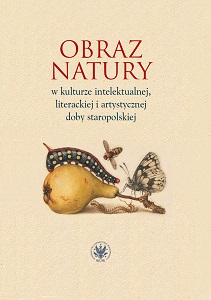Gabinety osobliwości natury Barokowe ogrody w świetle kultury kolekcjonowania
Cabinets of Curiosities. Baroque Gardens and the Culture of Collecting
Author(s): Aleksandra Jakóbczyk-Gola
Subject(s): Cultural history, Studies of Literature, Theory of Literature
Published by: Wydawnictwa Uniwersytetu Warszawskiego
Keywords: scientific revolution; herbarium; florilegium; botanic; collecting; microscope; scientific illustration; cabinet of curiosities; Ulisses Aldrovandi; Jakub Kazimierz Haur; museology; museum catalogue
Summary/Abstract: The dissertation discusses a visible change in attitude to nature in the 17th century, when science started to view nature in more detail. This revolution was seen at many levels: herbaria and florilegia – collections of flower graphics – became popular, illustrations showing whole plants and their elements in different stages appeared, the first attempts to use a microscope were made, botanical gardens were laid out to examine overseas plants and local flora. A plant became a precious object, an exhibit in a garden which, in turn, became an exhibition space. A garden was admired by visitors and bore testimony to good taste and expertise of its founder. As a result, a new profession was born: a botanist and a collector. The text draws a parallel between a cabinet of curiosities, a 17th century Wunderkammer and a garden, where exhibits of different origins were on display: artefacts and examples of architecture, engineering solutions, and the most valuable of them – plants. The dissertation analyses two strategies for collecting and describing plants in the context of the culture of collecting: the books by Ulisses Aldrovandi and Jakub Kazimierz Haur. The two scientists perceive nature differently than collectors of curiosities. They do not try to reproduce the world in its fullness or are not based on the idea of microcosmos, but they attempt to order the existing world. Their ideas are not an abstract exercise of intellect, but an attempt to organise fragments of knowledge. Ulisses Aldrovandi was an author of an encyclopaedia, which documented and systematised natural science; he was also a collector of plants and animals from all over the world, which he exhibited in his museum. Jakub Kazimierz Haur in his General Land Economics describes his collectables as if they belonged to a museum collection. In the chapter Herbarium of Flowers and Herbs the species are shown like in a museum catalogue. Thus the origins of natural history museums are not found in the 18th century collections,but in the scientific ideas of humanists – collectors.
Book: Obraz natury w kulturze intelektualnej, literackiej i artystycznej doby staropolskiej
- Page Range: 410-433
- Page Count: 34
- Publication Year: 2020
- Language: Polish
- Content File-PDF

